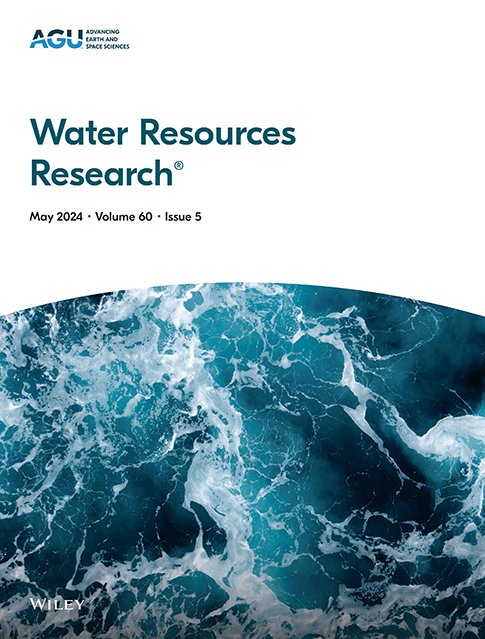Exploring the Controlling Factors of Watershed Streamflow Variability Using Hydrological and Machine Learning Models
IF 4.6
1区 地球科学
Q2 ENVIRONMENTAL SCIENCES
引用次数: 0
Abstract
Studying streamflow processes and controlling factors is crucial for sustainable water resource management. This study demonstrated the potential of integrating hydrological models with machine learning by constructing two machine learning methods, Extreme Gradient Boosting (XGBoost) and Random Forest (RF), based on the input and output data from the Soil and Water Assessment Tool (SWAT) and comparing their streamflow simulation performances. The Shapley Additive exPlanations (SHAP) method identified the controlling factors and their interactions in streamflow variation, whereas scenario simulations quantified the relative contributions of climate and land use changes. The results showed that when integrated with the SWAT model, XGBoost demonstrated better streamflow simulation performance than RF. Among the key factors influencing streamflow variation, area was the most important, with precipitation having a stronger impact than temperature, positively affecting streamflow when exceeding 550 mm. Different land use types exerted nonlinear impacts on streamflow, with notable differences and threshold effects. Specifically, grassland, cropland, and forest positively contributed to streamflow when their proportions were below 50%, above 20%, and between 30% and 50%, respectively. Nonlinear interaction effects on streamflow between land use types resulted in positive or negative contributions at specific proportion thresholds. Furthermore, precipitation was not dominant in the interaction with land use. Streamflow changes were primarily driven by drastic land use changes, which contributed 55.71%, while climate change accounted for 44.27%. This integration of hydrological models with machine learning revealed the complex impacts of climate and land use changes on streamflow, offering scientific insights for watershed water resource management.利用水文和机器学习模型探索流域流量变异的控制因素
研究水流过程及其控制因素对水资源的可持续管理具有重要意义。本研究基于水土评估工具(SWAT)的输入和输出数据,构建了极端梯度增强(XGBoost)和随机森林(RF)两种机器学习方法,并比较了它们的流量模拟性能,展示了将水文模型与机器学习相结合的潜力。Shapley加性解释(SHAP)方法确定了径流变化的控制因子及其相互作用,而情景模拟量化了气候和土地利用变化的相对贡献。结果表明,当与SWAT模型集成时,XGBoost比RF具有更好的流场模拟性能。在影响流量变化的关键因素中,面积是最重要的,降水的影响强于温度,在超过550 mm时对流量有正向影响。不同土地利用类型对河流流量产生非线性影响,存在显著差异和阈值效应。其中,草地、耕地和森林对河流流量的贡献分别在50%以下、20%以上和30% ~ 50%之间。在特定的比例阈值上,土地利用类型之间的非线性交互作用对河流的贡献为正或负。在与土地利用的交互作用中,降水不占主导地位。剧烈的土地利用变化对径流变化的贡献率为55.71%,气候变化对径流变化的贡献率为44.27%。将水文模型与机器学习相结合,揭示了气候和土地利用变化对河流流量的复杂影响,为流域水资源管理提供了科学见解。
本文章由计算机程序翻译,如有差异,请以英文原文为准。
求助全文
约1分钟内获得全文
求助全文
来源期刊

Water Resources Research
环境科学-湖沼学
CiteScore
8.80
自引率
13.00%
发文量
599
审稿时长
3.5 months
期刊介绍:
Water Resources Research (WRR) is an interdisciplinary journal that focuses on hydrology and water resources. It publishes original research in the natural and social sciences of water. It emphasizes the role of water in the Earth system, including physical, chemical, biological, and ecological processes in water resources research and management, including social, policy, and public health implications. It encompasses observational, experimental, theoretical, analytical, numerical, and data-driven approaches that advance the science of water and its management. Submissions are evaluated for their novelty, accuracy, significance, and broader implications of the findings.
 求助内容:
求助内容: 应助结果提醒方式:
应助结果提醒方式:


